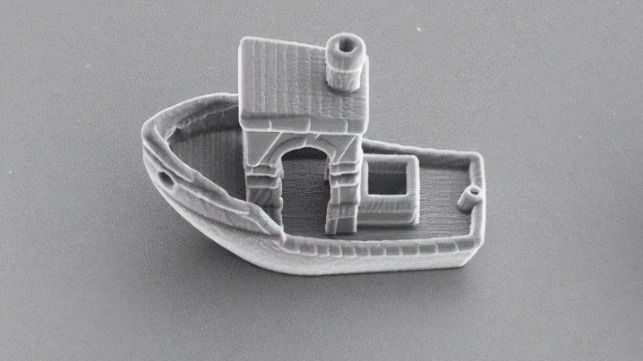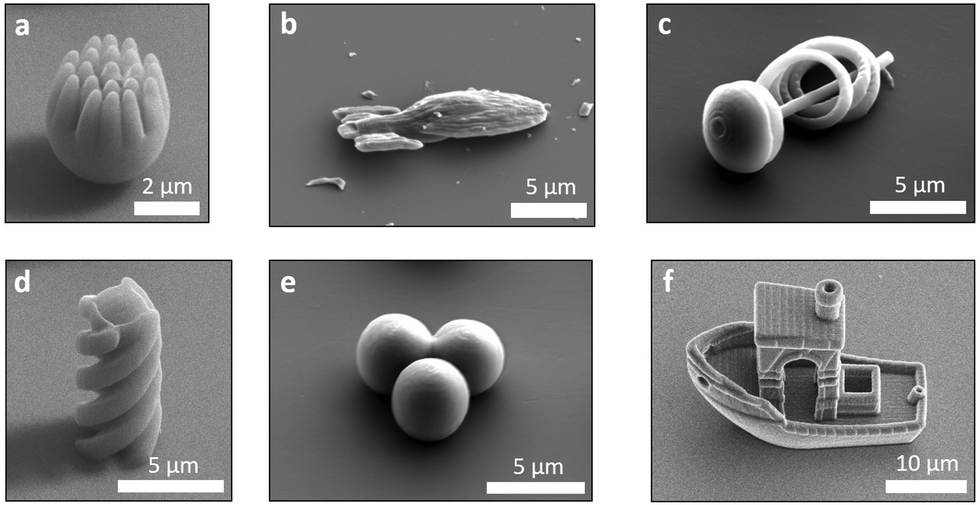Dutch Research Team Builds World's Smallest Vessel

Researchers at Leiden University in The Netherlands have built what they believe to be the world's smallest vessel. The unnamed boat was created with a micro-3D printer, and it measures all of 30 micrometers in length (about 1/1000th of an inch). This is about one third the width of a single human hair.
The team - led by Leiden researchers Rachel Doherty and Professor Daniela Kraft - created the boat during an investigation of small, engineered particles that move through water or other liquids (synthetic microswimmers). These engineered particles were printed using an ultra-precise 3D printer and then coated with platinum on one end; this platinum patch catalyzes hydrogen peroxide decomposition, propelling the particle forward through water.
Unlike previous experiments, the researchers used microscopic, collodial-scale particles that were not spherical, but spiral- or helix-shaped. They found that particle movement behavior varied based upon the shape used, opening up new avenues for research. The helical particles spun about their long axis, moving forward more quickly through the water with more directional stability.

Objects printed during the study; the helix (d) showed promise for directed motion in water (Leiden University)
The team suggested that their method of engineering particle shape opens new possibilities for simulating the movement of biological microswimmers (e.g., bacteria) and for designing synthetic microswimmers for therapeutic purposes like diagnostics and drug delivery.
"We hope to learn about what is now a good design principle for creating a little drug delivery vehicle," Kraft told CNN. "If you have a little particle that goes to a specific part of the body to deliver drugs, then it has to propel itself, and it may have to deal with the environment in your body, which is very complex."
Like the helixes, the boat had a purpose. The design is called #3DBenchy, and it is a standard benchmark intended to test the capabilities of a 3D printing device. The more playful objects created during the study also included an ultra-tiny replica of a fictional starship.
